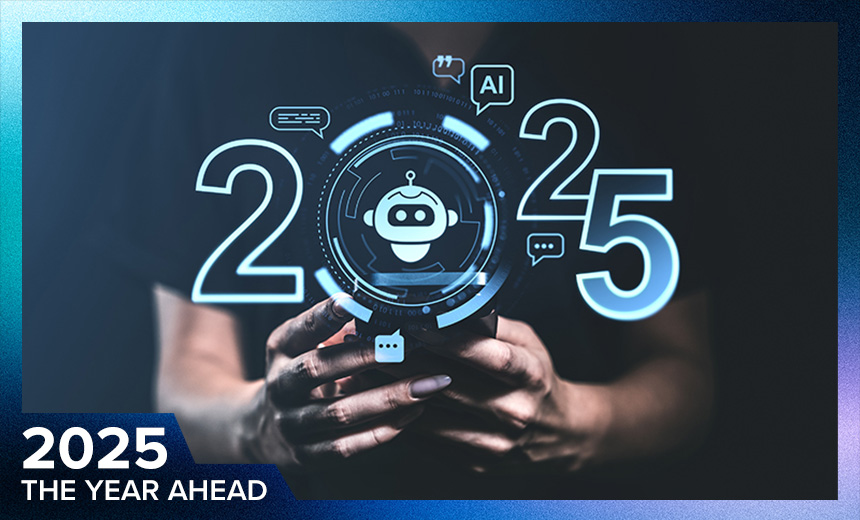Artificial Intelligence & Machine Learning,
Next-Generation Technologies & Secure Development
2025 Expected to Mark a Pragmatic Shift in AI Approaches Across Industries

As we approach 2025, the artificial intelligence (AI) landscape is poised for significant transformation, moving away from the experimental enthusiasm of the previous two years. This change is expected to play out across various industries and the developer community.
Related Insight: AI-Driven SOC Transformation with Cortex XSIAM
Dual Role of AI in Cybersecurity
In the realm of cybersecurity, AI serves a dual purpose—as both a formidable defense mechanism and an effective threat vector.
According to John Engates, field CTO at Cloudflare, we find ourselves in a landscape where “AI systems will contend with other AI systems, while human security teams strategize to retain control.” This arms race extends into the domain of open-source software, as noted by Chris Hughes, chief security advisor at Endor Labs. He emphasized that malicious actors are increasingly targeting open-source AI libraries and models.
Addressing Disinformation Risks in AI
As AI systems become essential in decision-making processes, they face a heightened risk of being undermined by disinformation. Grant Bourzikas, CSO at Cloudflare, warned that in 2025, disinformation could seep beyond mainstream channels to corrupt AI models, potentially jeopardizing critical applications like supply chain management and healthcare diagnostics. Incorporating rigorous data curation and verification frameworks will be vital to mitigate these threats.
AI’s Impact on Healthcare Data Challenges
The healthcare sector stands on the verge of AI-driven change aimed at tackling persistent data fragmentation. Kevin Deutsch, general manager at Softheon, believes that 2025 will represent a pivotal moment as industry leaders strive to create unified data models. This evolution will usher in a more personalized healthcare experience, benefiting both providers and patients.
Eric Prugh, CPO at Authenticx, echoed the sentiment, stating that AI is set to play a crucial role in identifying trends related to complex healthcare challenges. By analyzing patient interaction data, healthcare organizations can implement changes that foster positive outcomes and streamline operations.
Advancing AI through Edge Computing
Cloudflare’s Engates posited that the future of AI hinges on edge computing. By relocating computational resources nearer to where they are needed, organizations can significantly reduce latency and enable real-time applications, such as autonomous vehicles. He remarked that smart and distributed computing will be instrumental in realizing AI’s fullest potential.
Transforming the Developer Ecosystem
AI is also reshaping the developer landscape, simplifying coding and making it more accessible. Ricky Robinett, vice president of developer relations at Cloudflare, highlighted how AI-driven coding tools are reducing the learning curve for new developers. These tools empower small business owners and educators to develop tailored solutions without requiring extensive programming expertise.
Furthermore, AI co-pilots are facilitating a transition toward microservices and modular applications. Rita Kozlov, vice president of product management at Cloudflare, noted that purpose-built services are becoming easier to navigate with AI’s support, aligning with broader industry trends towards smaller, more efficient AI models and standardized pricing structures.
The Road Ahead: Emphasizing Pragmatism in AI
As organizations embark on a more calculated and value-driven path in AI adoption, 2025 is set to be a hallmark year for pragmatism in the sector. Kozlov stated that companies will adopt a more methodical approach to AI deployment, assessing varied strategies tailored to specific use cases rather than simply pursuing the largest models. The focus will shift towards ensuring measurable impacts devoid of needless complexity.
Confronting the Reality: Innovate or Become Obsolete
The challenges posed by AI will compel industries to innovate or risk obsolescence. From unifying healthcare data to leveraging edge-driven applications, the technologies that will define the upcoming year will be both transformative and imperative. Bourzikas articulated a stark reality: “In a decade, only two types of companies will persist: those that innovate through AI, and those that will no longer exist.”
